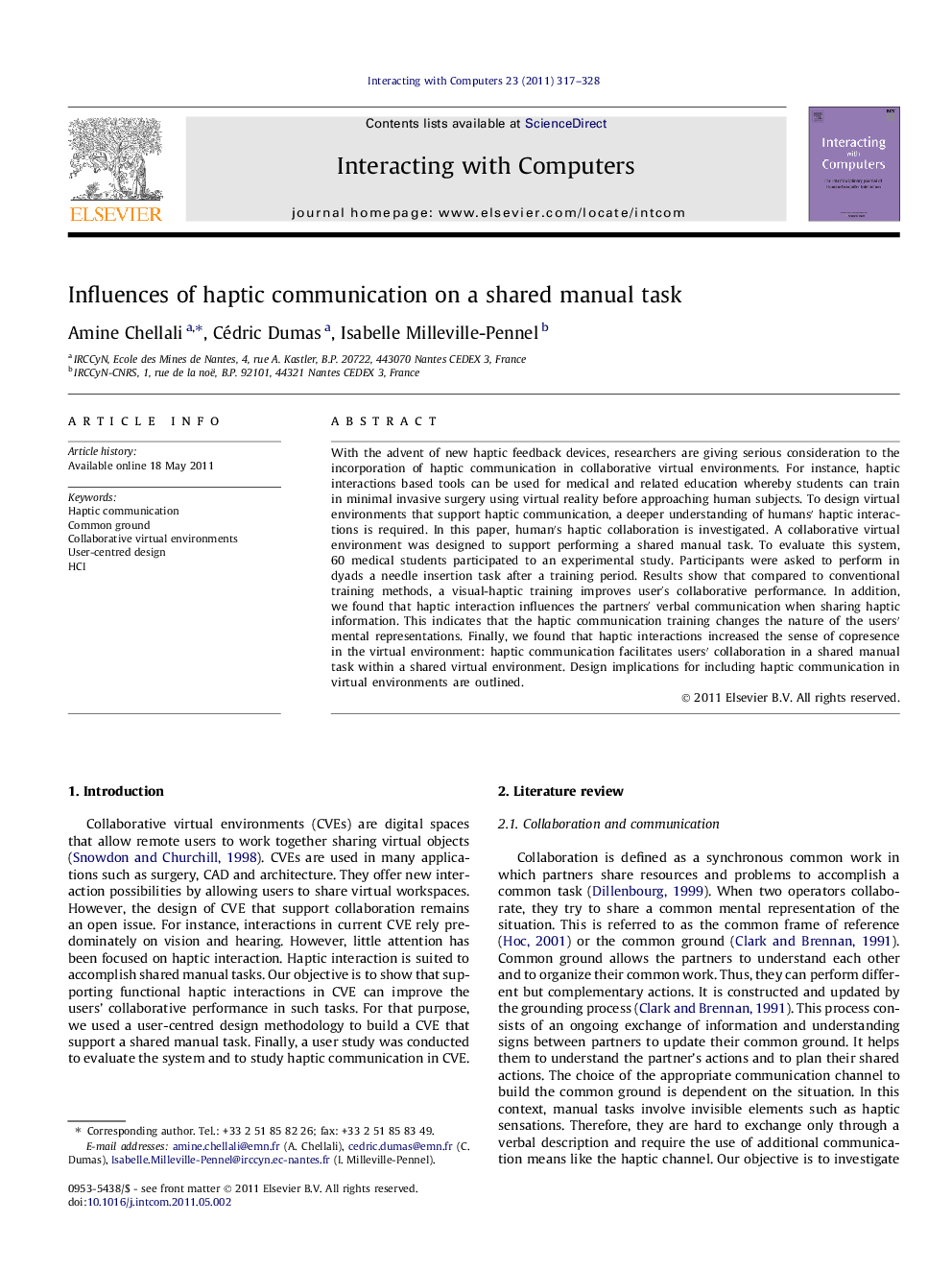| Article ID | Journal | Published Year | Pages | File Type |
|---|---|---|---|---|
| 551745 | Interacting with Computers | 2011 | 12 Pages |
With the advent of new haptic feedback devices, researchers are giving serious consideration to the incorporation of haptic communication in collaborative virtual environments. For instance, haptic interactions based tools can be used for medical and related education whereby students can train in minimal invasive surgery using virtual reality before approaching human subjects. To design virtual environments that support haptic communication, a deeper understanding of humans′ haptic interactions is required. In this paper, human′s haptic collaboration is investigated. A collaborative virtual environment was designed to support performing a shared manual task. To evaluate this system, 60 medical students participated to an experimental study. Participants were asked to perform in dyads a needle insertion task after a training period. Results show that compared to conventional training methods, a visual-haptic training improves user′s collaborative performance. In addition, we found that haptic interaction influences the partners′ verbal communication when sharing haptic information. This indicates that the haptic communication training changes the nature of the users′ mental representations. Finally, we found that haptic interactions increased the sense of copresence in the virtual environment: haptic communication facilitates users′ collaboration in a shared manual task within a shared virtual environment. Design implications for including haptic communication in virtual environments are outlined.
► Haptic communication in collaborative in virtual environments is investigated. ► Haptic communication is compared to verbal and visual communication modalities. ► Haptic communication improves collaborative performances for a shared manual task. ► Haptic communication increases the feeling of copresence in the virtual environment. ► Contents of verbal communications depend on the interaction modalities being used.
